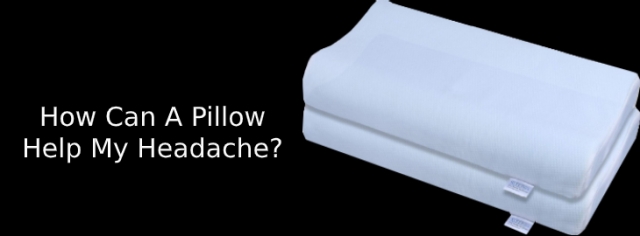How Can A Pillow Help My Headache?

One of the major known migraine triggers is fatigue brought on by a lack of quality sleep. Having a comfy supportive pillow that allows you to get a full night’s rest is one way to decrease your chances of having a migraine.
Further, sustained pressure on the neck and back are two other common migraine triggers, so a supportive pillow can reduce pressure on these critical areas of the neck and spine. Overheating is another major migraine trigger so a good migraine pillow should keep you cool and dry during the night.
Lastly, a good migraine pillow helps keep your head level while sleeping, which can prevent the changes in blood pressure that are associated with migraines. Keeping your head level and flat also reduces external pressure on the vessels in your skull, which are believed to be implicated in migraines. In turn, this may lead to migraine relief.
Types Of Migraine Pillows
Technically, any pillow can be a migraine pillow if it has the right mix of shape, comfort, support, and breathability. However, those who suffer from migraines tend to find themselves gravitating to a few major types of pillows.
Contoured Neck Support Pillows
Contoured neck support pillows are usually made from memory foam and feature a shallow indent where the base of the head and neck rest against the pillow. Contoured pillows are made to support the neck and head and prevent head movement while sleeping. Because your neck and head are somewhat engulfed by the sides of the pillow, contour memory foam pillows can get a bit hot if they are made out of dense memory foam.
Memory Foam
Memory foam is usually the default option for those who have generic sleep problems. Memory foam is made to conform to the pressure of the neck and head and spring back to the original shape when the pressure is released. Memory foam is an excellent therapeutic material as it evenly distributes body weight and does not create pressure points due to the contouring action. However, in the case of migraines, some memory foam pillows can do more harm than good. Thick and heavy memory foam pillow may actually make your migraine worse by keeping your head angled upwards and failing to properly cool you off. If you want a memory foam pillow for migraines, your best bet is to get something that is slim and light. Another important feature of memory foam is its responsiveness. Side sleepers, back sleepers, and stomach sleepers can all benefit from these. They help to ease up on head-neck tension. In turn, you may experience migraine relief and reduced stiffness in your neck.
Gel Memory Foam
Part gel, foam, gel memory foam pillows combine the best of both of these highly versatile materials. Gel memory foam molds to the shape of the head like memory foam but stay cool like a gel. Gel memory foam pillows are best for those sensitive to heat and who like the feel of memory foam, but not its density. Some people report being sensitive to the factory odor some gel pillows have, but many gel pillows are infused with natural anti-odor agents such as green tea, charcoal, and lavender. If you want the best pillow with a cooling effect, the gel memory foam is a great option to consider.
Post Your Ad Here

Comments